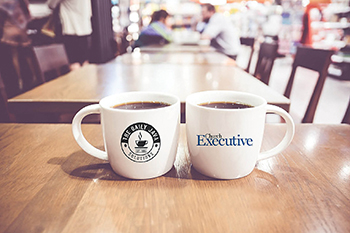By Mike Bacile
![]() As church cafés have developed over the years, so has the basic formula for creating a café that meets the needs and purpose of the community.
As church cafés have developed over the years, so has the basic formula for creating a café that meets the needs and purpose of the community.
Fading are the days when a church could just serve drip coffee and still be able to create the community and needed revenue for ministries.
But along with the new wave of cafés comes a stark reality: if the café isn’t set up and run correctly, it can be more burden than blessing.
About 10 years ago, when the first big wave of church cafés started, there was a logical thought that if you set it up like the local Starbucks, you’d be successful. For the most part, this theory has been proven wrong time and time again.
Four key lessons from these early pioneers make today’s church cafés much more likely to succeed.
#1: You can’t set up a church café’s flow like a local coffee house
We work with both art (high-end) cafés and church cafés, which we’ve dubbed “quick-hit” cafés. We could never set up the two entities the same way, because the volume of people a quick-hit café receives per hour is 10X that of a typical café.
Equally important is the fact that almost all church cafés are run by volunteers who practice their barista skills only once a week.
The correct layout of the café — as well as the type of equipment, products and menu — are essential to quick, consistent drinks being made to handle the crowds.
 #2: Your café needs a purpose
#2: Your café needs a purpose
As mentioned in our previous article [churchexecutive.com/archives/church-cafes-4], a purpose for your café is a must. A clear purpose supports your volunteers and your community. Your vision is what inspires customers to wait in a line of 30 to 50-plus people to get a drink instead of going to the local Starbucks.
Starbucks is a business for profit; your café is a business for purpose. If your community understands and supports your purpose, then your café is much more likely to succeed.
Recently, a church we worked with strongly supported a mission trip to Central America. They promoted to the community that all proceeds from the café would go to clothe children on the mission trip. The more money the
Coffee, Frappes and Friends!
Join The Daily Java and Church Executive Magazine for a chance to mingle with fellow WFX Conference and Expo attendees and exhibitors, while touring the Daily Java facility.
Enjoy lattes, coffees and frappes while catching up with old friends and making new ones.
Light hors d’oeuvres will also be provided.
Wed., Oct. 11, 2017
5:30 p.m. – 7 p.m. CDT
4389 Westgrove Dr.
Addison, TX 75001
Cost: FREE!
To RSVP, visit:
community could raise, the more children they could clothe. Each week, they let the community know how many children would be taken care of because of the

success of the café. This generous spirit drove longer lines, because everyone wanted to do their part.
When people understand the why, then the reason is no longer about the coffee; it’s about the purpose.
#3: Know who you are … and who you’re not
If your purpose is to clothe children with the proceeds made from the café, then the more people you can get through the café, the more children you can help.
Of course, the same can be said for creating fellowship — also a very important reason to build a café. But fellowship and revenue only happen if you have efficient, consistent serves.
Recently, I had a church customer who wanted his church’s café to be just like a local art café. Two of the staff went through an extensive two-day training on making the perfect latte. They cleaned the portafilter between each drink, weighed the grounds to the exact gram, did an intensive packing procedure, tamped, and finally pulled the shot. Each drink was taking about 3 minutes to make. Multiple that by 20 people, and the person in the back of the line was waiting a full hour to get a drink!
Obviously, the church’s café didn’t take off like leaders thought it would. They forgot who they were.
I often open a training session by telling the volunteers: “You might think you‘ll be volunteering in a café. In reality, you’re making a difference in your community and the ministries through coffee. Each time you serve one cup, you’ll raise money for something that truly matters. Along the way, you’ll be creating a community spirit that brings people together.”
#4: Work with the right people
Finally, it’s important to work with people who know how to build and run a church café, uniquely. There are many who might have worked with a local coffee house; but again, no local café — or even Starbucks — will ever experience the volume your church ought to have, if it’s set up and run correctly.
Once the café is set up and your people are properly trained, volunteers should be able to succeed, and your community will flourish.
Remember: a church café is more than just a place to get a good latte or cup of coffee. It should be the meeting point for fellowship and an opportunity for everyone in your community to give back and make a difference in the world.
Mike Bacile is owner of The Daily Java, a wholesale coffee equipment and product provider for more than 21 years. He speaks at many conventions around the country about the 25 steps for setting up a successful café. Over the past decade, Bacile’s company has focused on making church cafés a successful part of their communities, and The Daily Java has been labelled the “church coffee house experts.”


